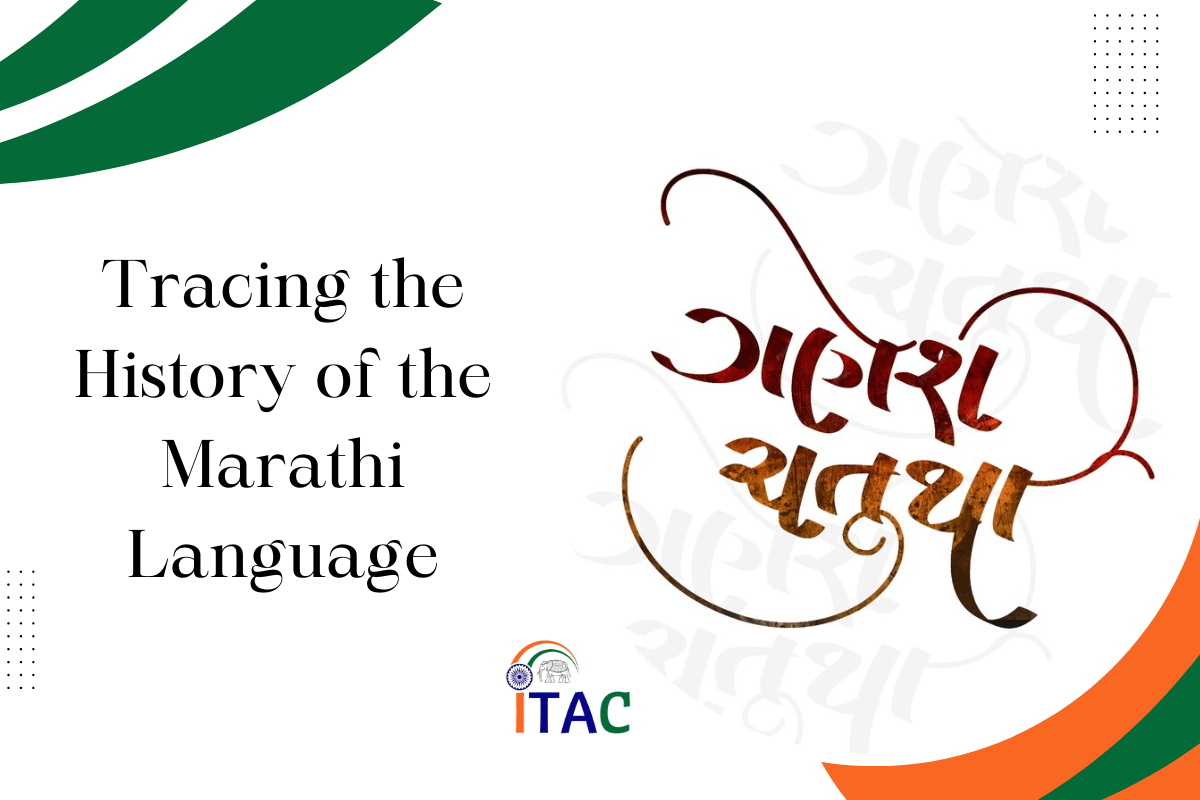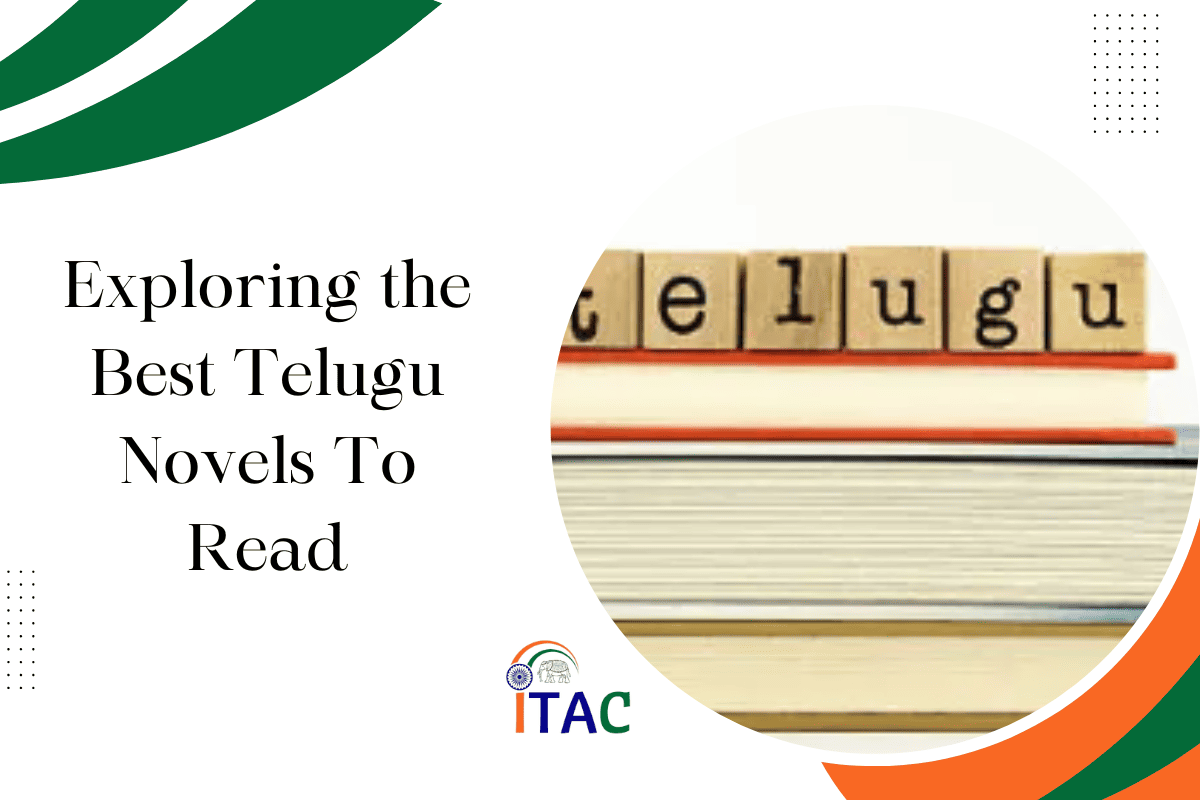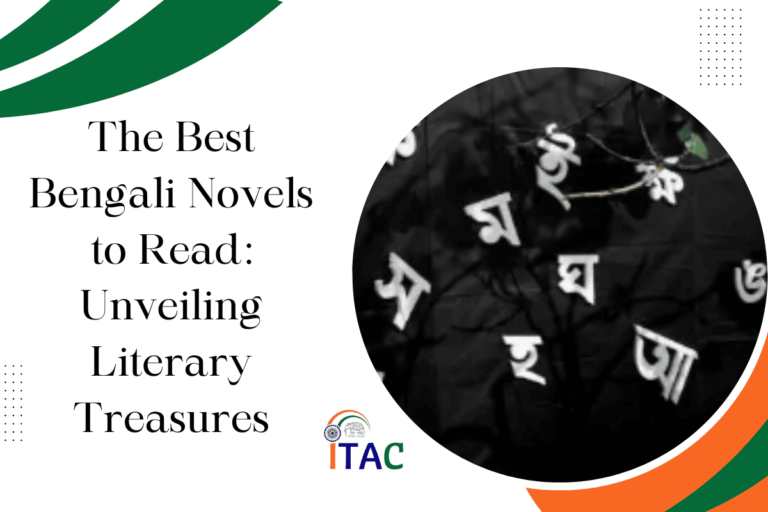The Marathi language, a quintessence of cultural richness and historical depth, flourishes in the western and central realms of India. As the official language of Maharashtra, Marathi holds a special place in the hearts of over 83 million speakers. Its roots delve deep into a storied past, boasting a literary heritage that mirrors the socio-political and cultural evolution of the region.
Let’s discuss the rich tapestry of Marathi Language history.
Table of Contents
Roots and Early Evolution Of Marathi Language (6th-13th Century)
The early development of the Marathi language is a fascinating journey that underscores its historical significance and cultural richness. This period can be dissected into several key points that highlight the language’s evolution:
- Origin in Maharashtri Prakrit:
- Marathi’s roots are deeply embedded in Maharashtri Prakrit, a prominent language of ancient India.
- Maharashtri Prakrit was widely spoken by the inhabitants of the Maharashtra region, serving as the linguistic predecessor of Marathi.
- Connection to Sanskrit:
- The evolution from Maharashtri Prakrit to Marathi illustrates a significant linguistic transition, showcasing Marathi’s deep ties to Sanskrit.
- Prakrit languages, including Maharashtri Prakrit, acted as intermediaries, bridging the ancient classical language of Sanskrit with the vernacular languages that emerged later, including Marathi.
- Role of Prakrit Languages:
- Prakrit languages played a crucial role in the linguistic landscape of ancient and medieval India, facilitating the transition from Sanskrit to various regional languages.
- These languages were more accessible to the common people, laying the groundwork for the development of vernacular languages like Marathi.
- Inscriptions on Copper Plates:
- The earliest tangible evidence of Marathi comes from inscriptions found on copper plates dating back to the 8th century.
- These inscriptions are crucial for understanding the early forms of Marathi and its usage in historical contexts.
- Linguistic Tapestry:
- The transition from Maharashtri Prakrit to Marathi was not abrupt but rather a gradual evolution that reflects a complex intermingling of linguistic, cultural, and social elements.
- This period marks the beginning of a rich linguistic tapestry that has been woven over centuries, contributing to the depth and diversity of the Marathi language.
- Cultural and Historical Context:
- The evolution of Marathi is deeply intertwined with the cultural and historical developments in the Maharashtra region.
- Understanding the early evolution of Marathi offers insights into the socio-political changes, trade interactions, and cultural dynamics of the region during this period.
- Foundation for Literary Tradition:
- This foundational phase set the stage for the flourishing of Marathi literature in subsequent centuries.
- The language’s development during this time enabled the expression of religious, philosophical, and social themes, which became prominent in later literary works.
The roots and early evolution of the Marathi language underscore its historical depth and cultural significance. From its beginnings in Maharashtri Prakrit to the emergence of its distinct identity, Marathi’s journey through the centuries reflects the rich tapestry of India’s linguistic heritage.
Development and Flourishing Of Marathi Language (13th-19th Century)
The evolution of the Marathi language from the 13th to the 19th century represents a period of significant growth and enrichment, driven by a combination of cultural, religious, and linguistic factors. This era, often regarded as a golden age for Marathi, was marked by several key developments:
- Influence of the Bhakti Movement:
- The Bhakti movement, a devotional trend that swept across India, played a pivotal role in shaping Marathi literature and language.
- Leaders of the movement, such as Sant Dnyaneshwar and Sant Tukaram, used Marathi to express their spiritual messages, making the teachings of Bhakti accessible to the common people.
- This era saw the production of devotional poetry, abhangs (a form of devotional poetry), and philosophical works, deeply embedding the principles of Bhakti in Marathi culture and literature.
- Emergence of Literary Giants:
- Saints and poets like Sant Dnyaneshwar, Sant Tukaram, Eknath, and Ramdas contributed immensely to the Marathi literary corpus with their seminal works.
- Their writings not only enriched Marathi literature with devotional and philosophical content but also set standards for Marathi prose and poetry.
- Diversification into Sub-Dialects:
- As Marathi spread across different regions within Maharashtra and beyond, it diversified into various sub-dialects.
- This diversification reflected regional linguistic influences, socio-cultural contexts, and varying literary traditions across Maharashtra.
- Formation of Standardized Marathi:
- The need for a standardized form of the language became apparent as Marathi literature and official documentation grew.
- Efforts to standardize Marathi were aimed at creating a cohesive linguistic framework that could accommodate diverse dialects and literary styles.
- Expansion of Lexicon:
- The Marathi vocabulary expanded significantly during this period, incorporating words from Persian and Arabic due to Islamic influence and later, from Portuguese and English through trade and colonization.
- This linguistic absorption demonstrated Marathi’s adaptability and its inclusive approach to foreign elements, enriching its vocabulary and expressive capabilities.
- Literary and Cultural Renaissance:
- This period witnessed a cultural and literary renaissance in Maharashtra, with Marathi language and literature at its core.
- The establishment of a rich literary tradition laid the foundation for future literary and cultural endeavors, promoting a sense of Marathi identity and pride.
- Impact on Society and Religion:
- The Bhakti movement, through its expression in Marathi, had a profound impact on the social and religious fabric of Maharashtra.
- It challenged established religious norms, promoted social equality, and fostered a sense of community among followers, transcending caste and class barriers.
- Adaptability and Inclusiveness:
- The period highlighted Marathi’s adaptability to new ideas, linguistic elements, and cultural influences.
- This inclusiveness and adaptability were key to its development and widespread acceptance as a vibrant and dynamic language.
The development and flourishing of Marathi from the 13th to the 19th century underscore its significant transformation into a rich, expressive language. It reflects the dynamic interplay between religious movements, linguistic diversity, and cultural exchanges, contributing to the vibrant tapestry of Marathi’s history and its enduring legacy.
Colonial Era and Beyond (19th-21st Century)
The period from the 19th to the 21st century represents a transformative era for the Marathi language, characterized by significant changes under British colonial rule and subsequent developments in independent India. This era can be delineated into several key aspects that highlight the evolution and impact of Marathi during this time:
- Introduction of the Printing Press:
- The British introduction of the printing press in the 19th century revolutionized Marathi literature and language.
- This technology facilitated the mass production of books and newspapers, making literature and educational material more accessible to the Marathi-speaking populace.
- The printing press played a crucial role in standardizing the Marathi language and script, as printed materials necessitated a certain level of uniformity.
- Establishment of Educational Institutions:
- British colonialists established educational institutions that offered instruction in Marathi, among other languages.
- These institutions were instrumental in increasing literacy rates among the Marathi-speaking population and in cultivating a new generation of writers, scholars, and intellectuals.
- Emergence of Social Reformers:
- The era is notable for the emergence of social reformers such as Jyotirao Phule and Savitribai Phule, who harnessed Marathi to advocate for social change, particularly in the realms of caste and gender equality.
- Their work, including writings and the establishment of schools for girls and marginalized communities, marked a significant use of Marathi as a tool for social reform.
- Contribution to the Independence Movement:
- Marathi played a vital role in the Indian independence movement, serving as a medium for political discourse, nationalist literature, and mobilization of the masses.
- Prominent figures and movements in Maharashtra utilized Marathi to inspire and unite people in the struggle against British rule.
- Literary and Cultural Renaissance:
- The 19th and early 20th centuries saw a renaissance in Marathi literature, with the emergence of new literary genres, including modern drama, poetry, and the novel.
- Writers and poets like Vishnu Shastri Chiplunkar, Gopal Ganesh Agarkar, and Lokmanya Tilak contributed significantly to Marathi literature, using the language to address contemporary social issues and promote nationalism.
- Post-Independence Developments:
- Following India’s independence in 1947, Marathi continued to flourish as the official language of the State of Maharashtra, established in 1960.
- The language has seen considerable development in the fields of education, literature, theater, and cinema, reflecting the socio-political and cultural dynamics of post-independence India.
- Globalization and the Digital Age:
- In the late 20th and early 21st centuries, globalization and the advent of digital technology presented new challenges and opportunities for Marathi.
- Efforts have been made to promote Marathi in digital platforms and technology, ensuring its relevance and accessibility in the digital age.
- Continued Role in Social and Cultural Identity:
- Marathi remains a crucial element of Maharashtra’s social and cultural identity, embodying the region’s traditions, values, and history.
- Ongoing efforts to promote and preserve Marathi underscore its enduring significance in the cultural tapestry of India.
The colonial era and the subsequent years have been a period of profound change for the Marathi language, marked by advancements in technology, education, and social reform. Through these developments, Marathi has not only adapted to changing times but also played an instrumental role in shaping the socio-political and cultural landscape of Maharashtra and India.
Modern Marathi Language and its Future (20th-21st Century)
The modern era of the Marathi language, spanning the 20th and 21st centuries, is marked by significant developments and challenges that reflect its evolving status and role in a rapidly changing world. This period can be characterized by several key aspects:
- Adoption of the Devanagari Script:
- Marathi formally adopted the Devanagari script as its official writing system, a move that standardized its written form and facilitated its teaching and learning across Maharashtra and beyond.
- This transition not only unified the Marathi-speaking community but also linked Marathi more closely with other Indian languages that use Devanagari, enhancing its accessibility and integration.
- Impact of Globalization:
The forces of globalization have presented both opportunities and challenges for the Marathi language. While globalization has introduced English and other languages into the daily lives of Marathi speakers, potentially diluting the use of Marathi, it has also opened up new avenues for the dissemination and promotion of Marathi culture and literature on a global scale.
- The Digital Age:
The advent of digital technology has significantly impacted Marathi, as it has other regional languages. The digital age demands the integration of Marathi in technology, from software and mobile applications to websites and social media platforms, ensuring its presence and utility in digital communication and media.
- Efforts to Promote and Revitalize Marathi:
- Recognizing the challenges posed by globalization and digitalization, there has been a concerted effort by linguists, cultural organizations, the government, and Marathi enthusiasts to promote the language and ensure its vitality.
- Initiatives include the development of Marathi digital content, support for Marathi education and literature, and the celebration of Marathi culture through festivals, media, and the arts.
- Legislation and Policy Support:
- The government of Maharashtra and other organizations have enacted policies and legislation aimed at promoting the use of Marathi in official communication, education, and media.
- These efforts are designed to safeguard Marathi’s status in the face of global and technological influences, ensuring its continued relevance and growth.
- Challenges in the Digital Age:
- Despite these efforts, Marathi faces challenges in the digital realm, including the need for more comprehensive support for Marathi in digital devices, online content, and technology platforms.
- The development of Marathi language technology, such as speech recognition, text-to-speech engines, and digital dictionaries, is crucial for its integration into the digital ecosystem.
- Cultural and Linguistic Identity:
Marathi is not just a language but a carrier of Maharashtra’s rich cultural and historical heritage. Preserving and promoting Marathi is essential for maintaining the cultural identity and pride of Marathi speakers.
- Future Prospects:
- The future of Marathi looks promising, with increasing awareness and initiatives aimed at addressing its challenges and leveraging opportunities.
- The language’s adaptability, rich literary tradition, and the dedication of its speakers and proponents suggest that Marathi will continue to thrive and evolve, maintaining its relevance for future generations.
The modern period of Marathi language and its future trajectory highlight the dynamic interplay between tradition and modernity, local and global influences, and technological advancements. By navigating these challenges and opportunities, Marathi is poised to retain its vibrancy and significance in the cultural and linguistic landscape of India.
Interesting Facts and a Call to Action
Marathi is distinguished by its unique alphabet and the incorporation of loanwords from various languages, reflecting its dynamic and adaptive nature. As we marvel at the resilience and beauty of Marathi, let us also recognize the importance of preserving and promoting this linguistic treasure. Whether by learning the language or exploring its rich literature and culture, we can all contribute to the vibrant tapestry of Marathi.
In conclusion, the history of the Marathi language is a testament to the enduring spirit of its speakers. From its ancient roots to its modern-day prominence, Marathi continues to evolve, embracing the challenges and opportunities of each new era. Let us celebrate this remarkable language and ensure its legacy endures for generations to come.
FAQs:
- What is the history of Marathi language?
Marathi is an Indo-Aryan language that originated from the Maharashtri Prakrit, which was spoken in ancient Maharashtra around the 3rd century BCE. It evolved over centuries, influenced by various languages and cultures, including Sanskrit, Persian, and Arabic.
- Is Marathi older than Hindi?
Marathi is generally considered to be older than Hindi. The origins of Marathi can be traced back to the Maharashtri Prakrit in ancient Maharashtra, while Hindi evolved from the medieval Apabhramsa language in northern India.
- Is Kannada older or Marathi?
Kannada is older than Marathi. Kannada, a Dravidian language, has a documented history dating back to ancient inscriptions from the 5th century AD, while Marathi emerged from the Maharashtri Prakrit around the 3rd century BCE.
- Which is the 3 oldest language in India?
The three oldest languages in India are generally considered to be Tamil, Sanskrit, and Kannada. Tamil, a Dravidian language, has the oldest continuous literary tradition dating back over two millennia. Sanskrit is one of the oldest Indo-European languages and has a rich literary heritage. Kannada, another Dravidian language, has ancient inscriptions dating back to the 5th century AD.
- How did the Marathi language originate?
The Marathi language originated from the Maharashtri Prakrit, which was spoken in ancient Maharashtra. Over time, it evolved through various stages influenced by Sanskrit and other languages, eventually becoming the modern Marathi language spoken today.










1 thought on “Tracing the History of the Marathi Language”